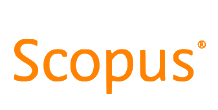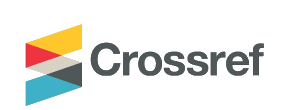The evolved landscape of ePortfolios: Current values and purposes of academic teachers and curriculum designers
DOI:
https://doi.org/10.21153/jtlge2018vol9no1art669Keywords:
ePortfolios, reflective practice, digital literacies, higher educationAbstract
As ePortfolios are increasingly being used in universities to help develop self-reflective practitioners, academic teachers and students need to develop the skills and processes required to implement them. During 2015, a series of webinars was presented by a cross-university team to provide professional development for academic teachers, curriculum designers and other staff interested in initiating or extending ePortfolio learning in their institutions. A survey was conducted with participants to gauge the depth of understanding and use of ePortfolios in degree programs. The survey aimed to clarify participants’ perception of the value of ePortfolio tools in Australian universities, and to identify future directions for developing knowledge and learning related to ePortfolios. Through the survey questions participants were able to provide information anonymously about their knowledge and use of ePortfolios. Respondents were also invited to be interviewed. Nine interviews, conducted in 2016, explored ePortfolio-users’ opinions of the learning tool. The results indicate that teachers’ use of the ePortfolio as a learning tool has evolved beyond that reported in the current literature. Furthermore, when used for reflection, assessment and documenting professional standards, the ePortfolio tool contributes to the students’ development of skills required to transition to future careers.
Metrics
References
Artino, A.R., La Rochelle, J.S., Dezee, K.J., Gehlbach, H. (2014). Developing questionnaires for educational research: AMEE Guide No. 87. Med Tech 36(6), 463–474. doi: 10.3109/0142159X.2014.889814
Butler, P. (2006). A review of the literature on portfolios and electronic portfolios (ePortfolios). Accessed from http://akoaotearoa.ac.nz/download/ng/file/group-996/n2620-eportfolio-research-report.pdf
Bennett, D., Rowley, J., Dunbar-Hall, P., Hitchcock, M., & Blom, D. (2016). Electronic portfolios and learner identity: An ePortfolio case study in music and writing. Journal of Further and Higher Education, 40(1), 107–124. doi:10.1080/0309877X.2014.895306
Boesch, B., Reynolds, C., & Patton, J. (2016). ePortfolios as a tool for integrative learning: Building classroom practices that work. In E. Railean, G. Walker, A. Elçi, & L. Jackson (Eds.), Handbook of research on applied learning theory and design in modern education (pp. 439–464). Hershey, PA: IGI Global. doi:10.4018/978-1-4666-9634-1.ch021
Buyarski, C., & Landis, C. (2014). Using an ePortfolio to assess the outcomes of a first-year seminar: Student Narrative and Authentic Assessment. International Journal of ePortfolio 4(1), 49–60. ISSN 2157-622X
Callens, J., & Elen, J. (2007). Purpose and design of an ePortfolio. Conference ICL2007, September 26-28, 2007, Vilach, Austria. Kassel University Press.
Cambridge, D. (2010). Eportfolios for lifelong learning and assessment. Retrieved from https://ebookcentral-proquest-com.ezproxy.csu.edu.au
Cambridge, D. (2012). E-Portfolios and global diffusion: Solutions for collaborative education. IGI Global.
Connaughton, J., & Edgar, S. (2012). What is the relevance of reflective practice in undergraduate e-portfolios to professional work practices? Australian Collaborative Education Network (ACEN Inc.) Conference Proceedings. Melbourne/Geelong. Retrieved from: http://acen.edu.au/2012conference/wp-content/uploads/2012/11/61_What-is-the-relevance-of-reflective-practice-in-undergraduate-e.pdf
Connelly. M., & Clandinin, D. (1990). Stories of experience and narrative inquiry. Educational Researcher, 19(5), 2–14. https://doi.org/10.3102/0013189X019005002
Cross, J. (2012). From the reflective ePractitioner: A pilot model of teacher preparation employing ePortfolio. International Journal of ePortfolio (2)1, 39–48. ISSN: 2157-622X
Danowitz, E. (2012). On the right track: Using ePortfolios as tenure files. International Journal of ePortfolio (2)1, 113–124. ISSN 2157-622X
Dillon, L. (2011). Writing the self: The emergence of a dialogic space. Narrative Inquiry, 21(2), 213–237. http://dx.doi.org/10.1075/ni.21.2.03dil
Dunbar-Hall, P., Rowley, J., Brooks, W., Cotton, H., & Lill, A. (2015). E-portfolios in music and other performing arts education: History through a critique of Literature. Journal of Historical Research in Music Education, (36)2, 139–154. https://doi.org/10.1177/153660061503600205
Eynon, B., & Gambino, L. (2017). High-impact ePortfolio practice: A catalyst for student, faculty, and institutional learning. Stylus Publishing, 256 pages. ISBN-13: 978-1620365045. Accessed 11/11/17: https://books.google.com.au/books?id=f2HmDQAAQBAJ&printsec=frontcover#v=onepage&q&f=false
Eynon, B., & Gambino, L. (2016). Professional development for high-impact eportfolio practice. Peer Review, (18)3. Association of American Colleges & Universities (AAC&U). https://www.aacu.org/peerreview/2016/summer/Eynon
Gibson, D. (2006). ePortfolio decisions and dilemmas. In A. Jafari & C. Kaufman (Eds.), Handbook of research on ePortfolios (pp. 135–145). Hershey, PA: IGI Global. Doi:10.4018/978-1-59140-890-1.ch014
Gross, J. (2012). Building your library career with Web 2.0. Woodhead Publishing Limited.
Hains-Wesson, R., Wakeling, L., & Aldred, P. (2014). A university-wide ePortfolio initiative at Federation University Australia: Software analysis, test-to-production, and evaluation phases. International Journal of ePortfolio (4)2, 143–156. ISSN 2157-622X
Hallam, G. (2008). The Australian ePortfolio project and the opportunities to develop a community of practice. In Hello! Where are you in the landscape of educational technology? Proceedings ascilite Melbourne, December 2008. http://www.ascilite.org.au/conferences/melbourne08/procs/hallam.pdf
Hampe, N., & Lewis, S. (2013). E-portfolios support continuing professional development for librarians. The Australian Library Journal (62)1, 3–14, DOI: 10.1080/00049670.2013.771766
Halstead, A., & Wheeler, L. (2009). Enhancing reflective professional practice through the use of an ePortfolio: A UK case study. In Same places, different spaces. Proceedings of ascilite. Auckland, December 2009. http://www.ascilite.org.au/conferences/auckland09/procs/halstead.pdf
Heinrich, E., & Bozhko, Y. (2012). The role of institutions in creating student-focused virtual learning spaces with ePortfolio systems. In M. Keppell, K. Souter, & M. Riddle (Eds.), Physical and virtual learning spaces in higher education: Concepts for the modern learning environment (pp.119–135). Hershey, PA: IGI Global. Doi: 10.4018/978-1-60960-114-0.ch008
Herring, D., & Notar, E. (2011). Show what you know: ePortfolios for 21st century learners. College Student Journal, (45)4, 786–792. ISSN: 0146-3934
Jokinen, T. (2006). About ePortfolios – practise, history and different ways of using them. EPICC Final Report: http://www.eife-l.org/activities/projects/epicc/final_report/WP3/EPICC3_9_Portfolios%20in%20Finland.pdf
McAllister, L., & Hauville, K. (2017). Striving for sustainability: ePortfolio pedagogy in Australian Higher Education. In J. Rowley (Ed.), ePortfolios in Australian universities (pp.13–32). Springer: ISBN: 978-981-10-1731-5.
Munday, J. (2017). An embedded ePortfolio in a master’s degree: Is it working? International Journal of ePortfolio (7)2, 175–185. ISSN 2157-622X
Munday, J. (2014). Taking their skills with them: Seeking to find out whether ePortfolio skills transfer from degree programs to the classroom. In A. Poot (Ed), Pebble Pad: Personalising the curriculum (pp. 5–15). Telford, Pebble Learning Ltd. http://www.pebblebash.co.uk/2014/Resources/pdf/pb2014rp01.pdf
Munday, J., Rowley, J., & Polly, P. (2017). The use of visual images in building professional self identities. International Journal of ePortfolio (7)1, 53–65. ISSN 2157-622X.
Nakonechny, J., & Ellis, S. (2012). Bryofolios: Individual and group e-oortfolio learning spaces for developing authentic science scholars. In, D. Cambridge. (Ed.), E-portfolios and global diffusion: Solutions for collaborative education (pp. 29–40). IGI Global.
Office for Learning and Teaching (OLT). (2016). ePortfolios for creative arts, music and arts students in Australian universities. ID11-2041 Final Report. ISBN: 978-1-76028-688-0.
Parks, K., Dredger, K., & Hicks, D. (2013). ePortfolio as a measure of reflective practice. International Journal of ePortfolio, (3)2, 99–115. ISSN 2157-622X
Pegrum, M., & Oakley, L. (2017). The changing landscape of e-portfolios: Reflections on 5 years of implementing e-portfolios in pre-service teacher education. In T. Chaudhuri & B. Cabau (Eds.), E-portfolios in higher education, (pp.21–34). Springer Nature. Singapore. doi: 10.1007/978-981-10-3803-7_2
QUT Publications. (2009). ePortfolio concepts for academic staff. Accessed 11/11/17: http://www.eportfoliopractice.qut.edu.au/docs/AeP_conceptguide_academic_staff.pdf
Rawlings, J. (2016). The use of e-portfolios in music teacher education programs: 2003-2013. Contributions to Music Education, 41, 53–69. Retrieved from https://search-proquest-com.ezproxy.csu.edu.au/docview/1790516777?accountid=10344
Ring, G., & Ramirez, B. (2012). Implementing ePortfolios for the assessment of general education competencies. International Journal of ePortfolio, (2)1, 87–97. ISSN 2157-622X
Rodgers, C. (2002). Voices inside schools seeing student learning: Teacher change and the role of reflection. Harvard Educational Review, 72(2), 230–253. DOI: 10.17763/haer.72.2.5631743606m15751
Rowley, J. (2017). ePortfolios in Australian Universities. Springer.
Rowley, J., & Munday, J. (2014). A ‘sense of self’ through reflective thinking in ePortfolios. International Journal of Humanities Social Sciences and Education (1)7, 78–85. ISSN 2349-0373
Stefani, L., Mason, R., & Pegler, C. (2007). The educational potential of e-portfolios: Supporting personal development and reflective learning. London: Routledge.
Wakimoto, D. K., & Lewis, R. E. (2014). Graduate student perceptions of eportfolios: Uses for reflection, development, and assessment. The Internet and Higher Education, 21, 53–58. doi: 10.1016/j.iheduc.2014.01.002
Weber, I., & Evans, P. (2011). E = Mportfolios2? Challenges and opportunities in creating mobile electronic portfolio systems for lifelong learning. International Journal of Web Portals 3(2), 1–13. DOI: 10.4018/978-1-4666-2779-6.ch005
Winberg, C., & Pallitt, N. (2016). ‘I am trying to practice good teaching’: Reconceptualizing eportfolios for professional development in vocational higher education. British Journal of Educational Technology (47)3, 543–553. doi: 10.1111/bjet.12440
Yancey, K. (2016). Foreword: What we learn from this portfolio collection. In, J. Rowley (Ed.), ePortfolios in Australian universities. Springer. (pp. i-iv). Springer: ISBN: 978-981-10-1731-5.










